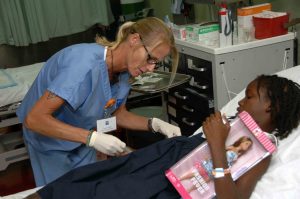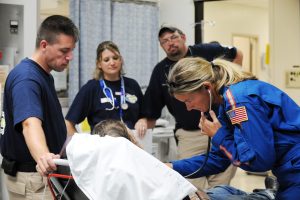What does the LNC do in a Failure to Rescue Case?
 Your role as a legal nurse consultant in helping an attorney with a failure to rescue case might involve explaining the function of a rapid response team.
Your role as a legal nurse consultant in helping an attorney with a failure to rescue case might involve explaining the function of a rapid response team.
The concept of a rapid response team originated with a critical care nurse from New Zealand who recognized the need to bring resources to the bedside of a patient whose condition deteriorated before more serious events could occur. I met this nurse in Japan when she and I presented programs at the same International Council of Nurses conference.
Purpose of Rapid Response Team
The rapid response system’s purpose is to react to early warning signs before the patient’s condition completely deteriorates into a cardiac arrest. These systems are designed to rescue deteriorating patients. But they have a broader function. The system’s team also reviews what happened. The patient safety aspect collects and analyzes data from events to improve prevention. The team’s goal is to reduce the need for their services.
Composition of Rapid Response Team
The composition of rapid response teams varies from hospital to hospital. A team typically consists of 2-3 people who are assigned to flexible responsibilities within the facility. The team may consist of respiratory therapists, physician assistants, nurse practitioners, critical care nurses, intensivists (critical care doctors), hospitalists (physicians employed within a facility to provide inpatient care) or residents. The team’s role is to assess and stabilize the patient, assist with communication with the attending physician, educate and support the nursing staff and family, and assist with transfer to another level of care, if needed.
The rapid response team brings people with critical care expertise to a non-critical care nursing unit. The professionals on the team have differing backgrounds and perspectives so they can coordinate care. Their common goal is to stabilize the patient by addressing the immediate early warning signs and to determine how the patient’s care should be changed. But they do not take over the care of the patient for the rest of the admission. That responsibility remains with the attending physician.
Condition H: Getting the family involved
Some facilities encourage families and patients to pick up any phone in the hospital to report a Condition H (for help). The University of Pittsburgh Medical Center Shadyside and Children’s Hospital was the first facility on the U.S. to invite patients and families to call a rapid response team to address unresolved concerns about their safety and health. They might do so if
- They are fearful something is seriously wrong and have expressed their concerns to staff without them being validated or recognized as important
- Experience a communication failure with the staff
- Are confused about the patient’s care
- Need to know where to voice concerns
- Feel something about the patient’s condition is just not right
Experience shows that after families understand the purpose of the rapid response team, they do not make calls for non-urgent reasons.

Helping the attorney understand a failure to rescue case
Your legal nurse consulting analysis of the failure to rescue case may focus on:
- What were the risk factors for a clinical deterioration?
- What were the clinical signs that the patient was deteriorating?
- Was there a long gap in documentation before the patient was “suddenly” found unresponsive?
- Did the facility have a rapid response team?
- How much time elapsed before the nurse or other provider called the rapid response team?
- What did the team do?
- Was the patient transferred to the critical care unit after the team arrived?
- How much time elapsed before the critical care unit accepted the patient? (This might relate to needing to clear a bed.)
Patricia Iyer MSN RN LNCC is president of the Pat Iyer Group. She helps LNCs grow their businesses. Want to talk to Pat? Send an email with the answers to 3 questions: What is your business now? Why do you think it would be helpful to talk to Pat? On a scale from 0-10 with 10 being highest, how emotionally and financially committed are you to growing your business? Please look at the top of the page and click on “Click to Email”.
